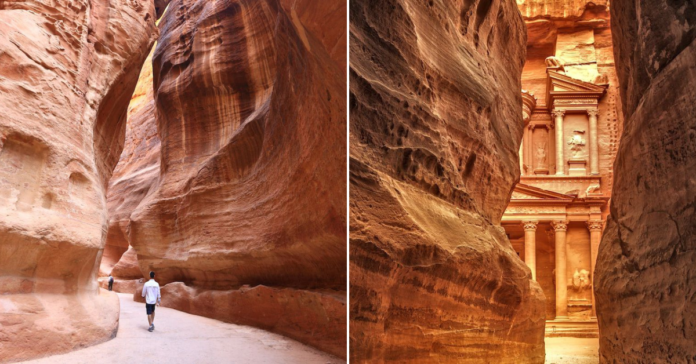Petra, sometimes called the Rose Metropolis, was a red desert ancient Nabataean carving city. It developed in the southwestern Jordanian desert gorges as its capital and a significant economic center. Founded in the fourth century BCE, Petra’s breathtaking architecture has become recognizable.
Petra, which is 102 square miles in size, stunned more than a million tourists. There are hidden treasures of historical value within the 15% that have been discovered, and the remaining 85% that are still buried.
Petra became renowned throughout the world due to its movie appearances. Due to its beautiful architecture, Petra has been featured in films such as “Indiana Jones,” “The Mummy Returns,” and “Aladdin.” Its archeological show is famous even to those who have not been there.
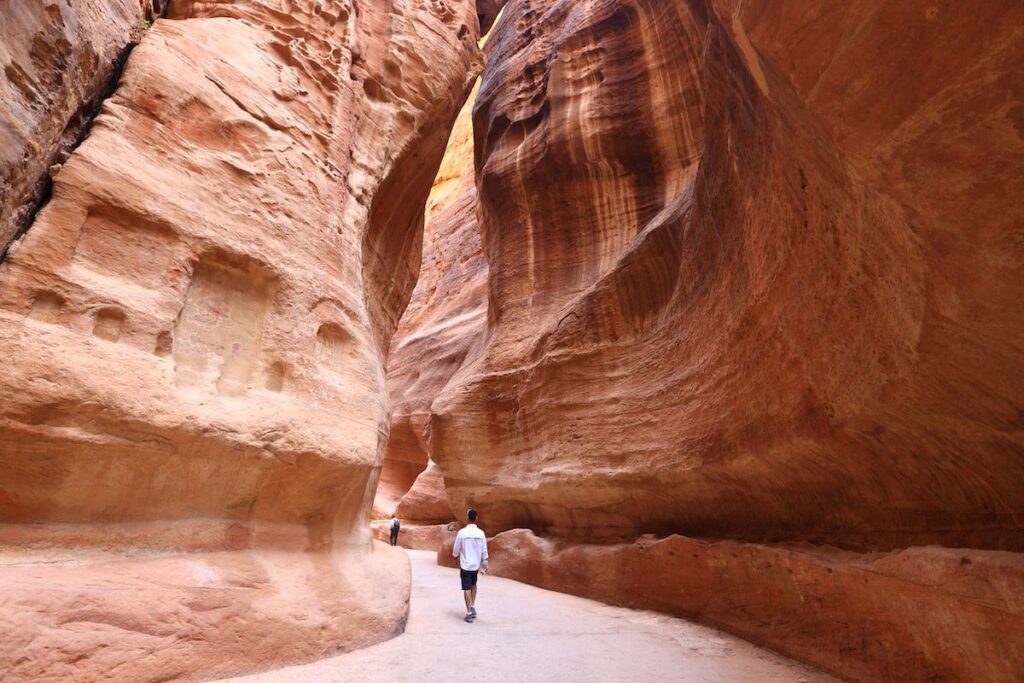
Photo: Stock Photos from Usoltceva Anastasiia/Shutterstock
The route taken by travelers and traders for thousands of years was the same route taken by visitors to Petra. They found the wonders of the city by following the Siq, a meandering ravine. This three-quarter-mile path, which translates to “the shaft,” increased excitement for what was to come. In addition to various embellishments, the path was decorated with camel carvings and niches for Baetylus, statues of gods.
The hike, though seemingly long, rewarded guests with amazing views. The experience inspired reverence and admiration for the heritage of the location. Petra’s famous buildings began to appear as they neared the end of the Siq. Those who made the effort to see the old city were overcome by the first look at its famous structures, which made the trip unforgettable.
The Nabataeans
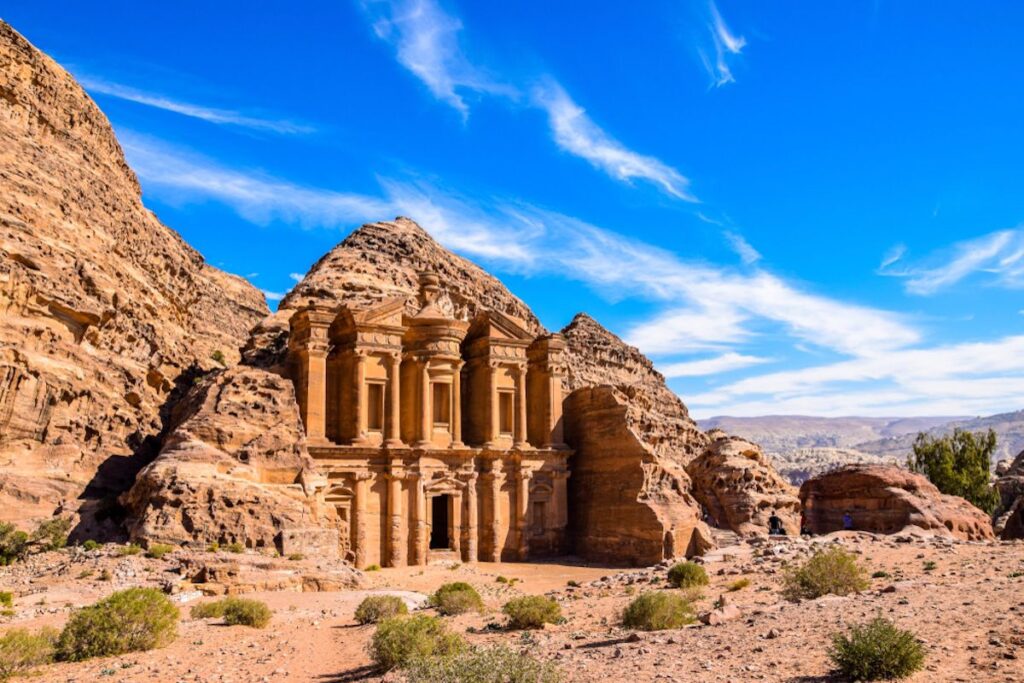
Photo: Stock Photos from tenkl/Shutterstock
The Nabataeans were a Bedouin group that lived in the Arabian desert and were nomadic; Petra was their capital. The city, which they called Raqmu, came to represent their wealth and power. Between the second and fourth century BCE, they developed a thriving culture and were a powerful political force.
In the ancient world, the Nabataeans thrived by controlling an important economic network. Their participation in global trade introduced them to Arab and Mediterranean cultures, which shaped their culture and religious views. With 30,000 people, Petra was a challenging target because of its advantageous location.
The city expanded under Roman control following the Nabataeans’ defeat. The Treasury is one example of the enduring effects of Roman architecture. The kingdom of Nabataea eventually declined and split into various Arab kingdoms.
The Reintroduction of Petra
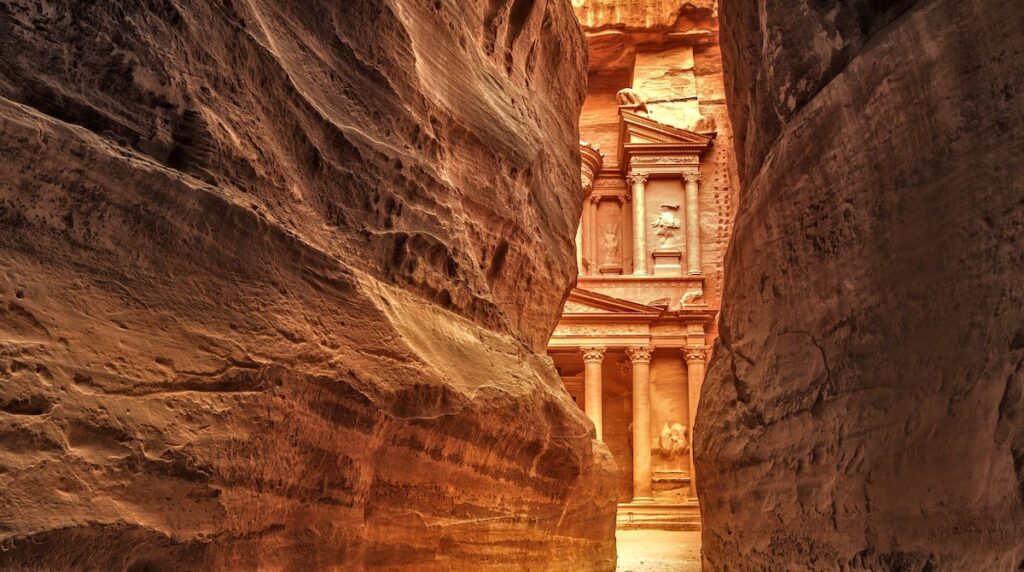
Photo: Stock Photos from klempa/Shutterstock
Petra was mainly deserted after the seventh century CE. For more than a thousand years, the city remained hidden from the outside world, although Nomadic Shepherds found refuge in its buildings. The re-discovery of Petra by Swiss explorer Johann Ludwig Burckhardt in 1812 changed this.
Burckhardt discovered a German explorer who died while looking for Petra while studying Arabic in Syria. Curious, he decided to find out. He lived in Aleppo for years, blending into the community under the alias Sheikh Ibrahim Ibn Abdallah. He went off on a journey to Cairo, confident in his disguise, with the intention of passing Petra.
Burckhardt heard of ancient ruins in Jordan. He became the first Westerner to view Petra when he got a guide to take him across the Siq while pretending to give up a goat.
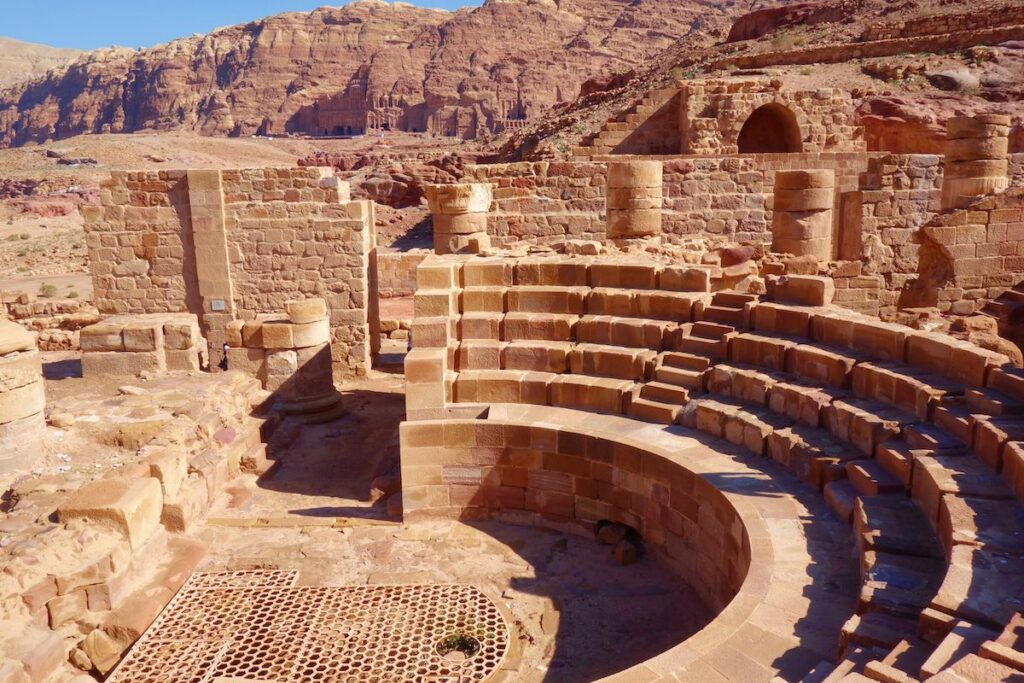
Photo: Stock Photos from Firebird007/Shutterstock
Burckhardt spoke of an uncovered burial site that had an enormous impact when he arrived in Petra. He mentioned Petra’s unparalleled importance and connected it to the ruins of Wady Mousa. His discovery made Petra famous around the world by encouraging several Western travellers to visit, record its architecture, and spread its beauty.
Al Khazneh
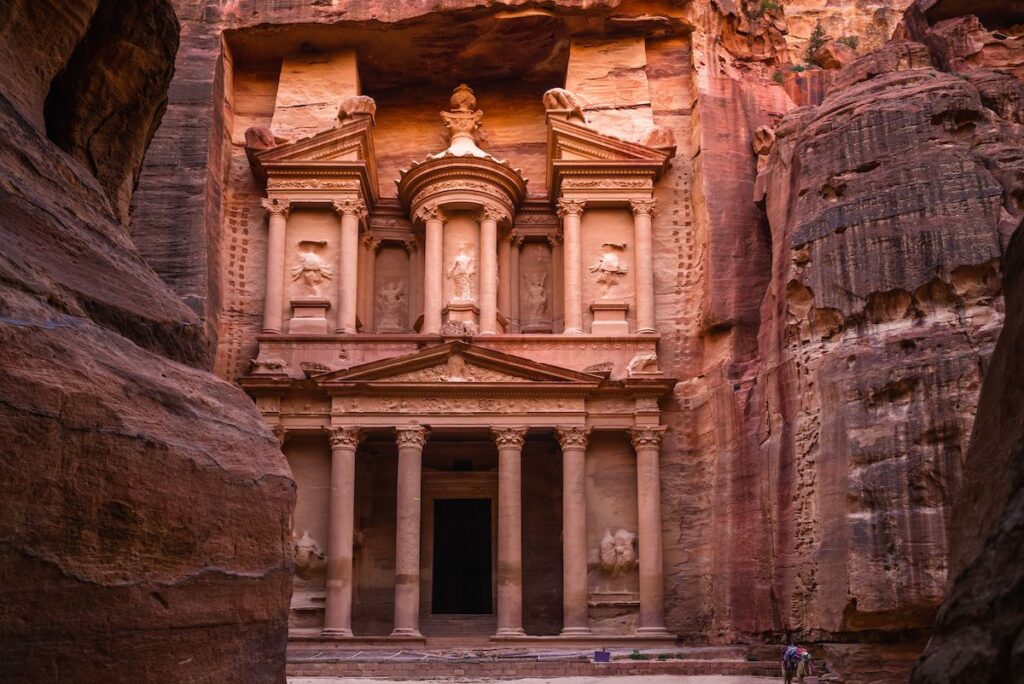
Photo: Stock Photos from Richie Chan/Shutterstock
Petra’s most recognizable landmark was the Treasury, also known as Al Khazneh. It was 82 feet long and 127 feet high, carved into red sandstone. The decorations in the Hellenistic style were a reflection of its significance. Archaeologists thought it was a royal tomb, probably constructed when Petra developed under King Aretas IV. Its exact beginnings were unclear.
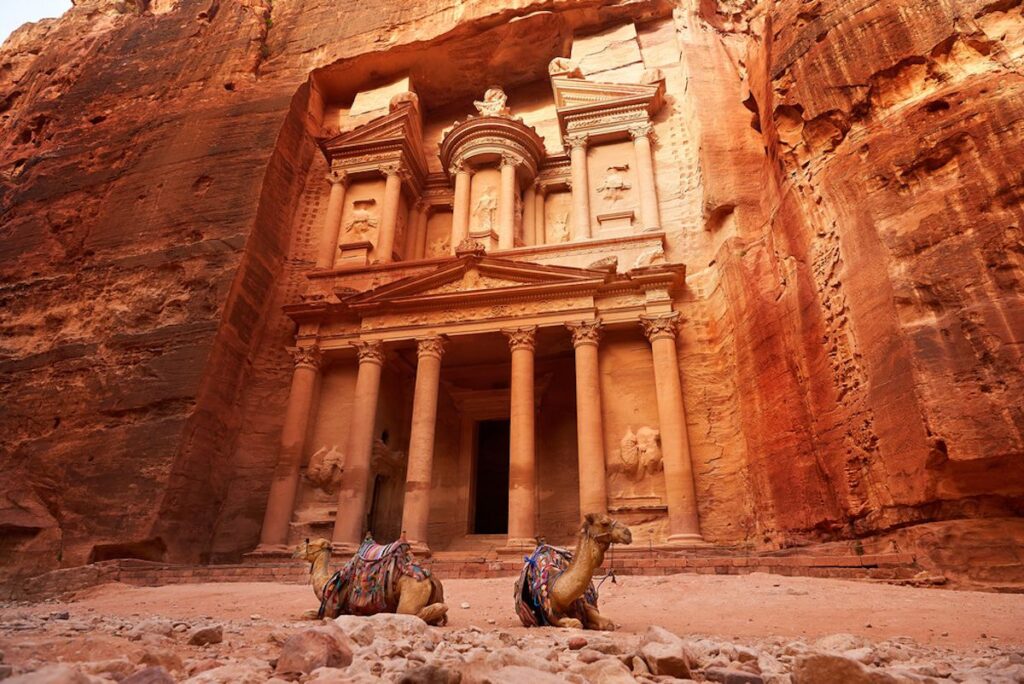
Photo: Stock Photos from-Aleksandra H. Kossowska/Shutterstock
The Bedouins thought a Pharaoh’s treasure was in the urn atop Al Khazneh. In an attempt to uncover riches, they fired at it. Even in “Indiana Jones,” the name “Treasury” remained.
Every year, millions of people travel to Petra to take in its civilization and architecture.
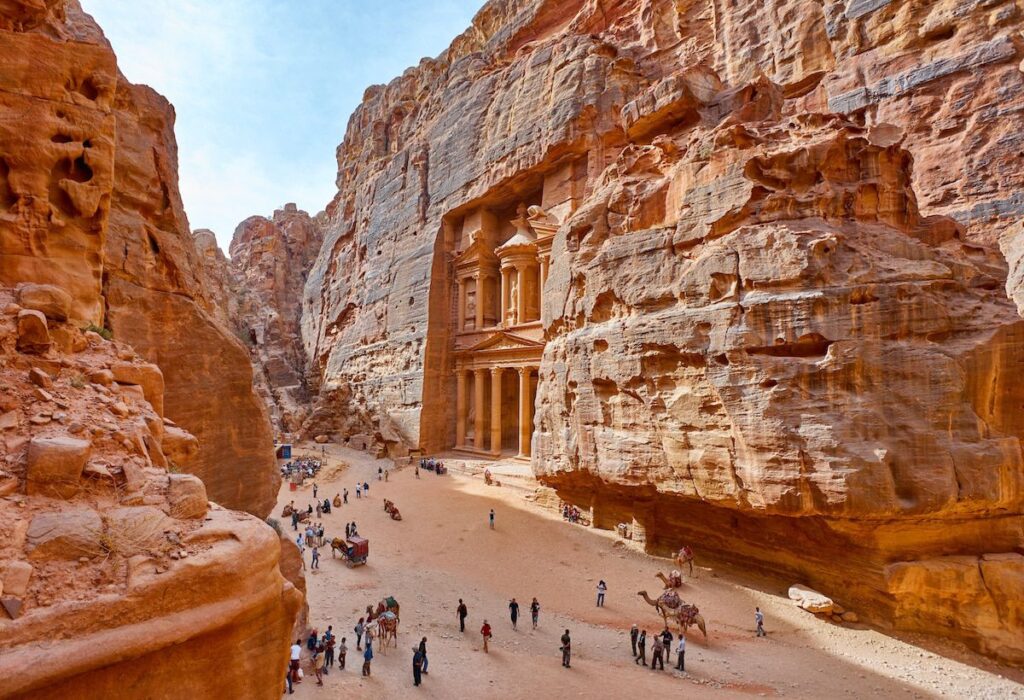
Photo: Stock Photos from Truba7113/Shutterstock
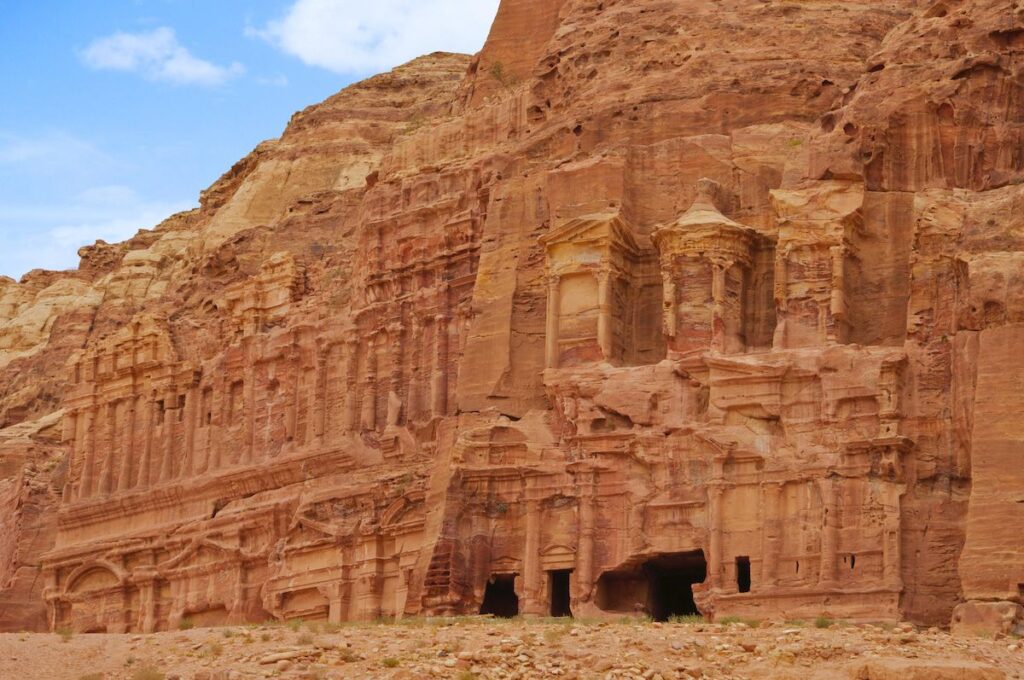
Photo: Stock Photos from Ronsmith/ShutterstocK
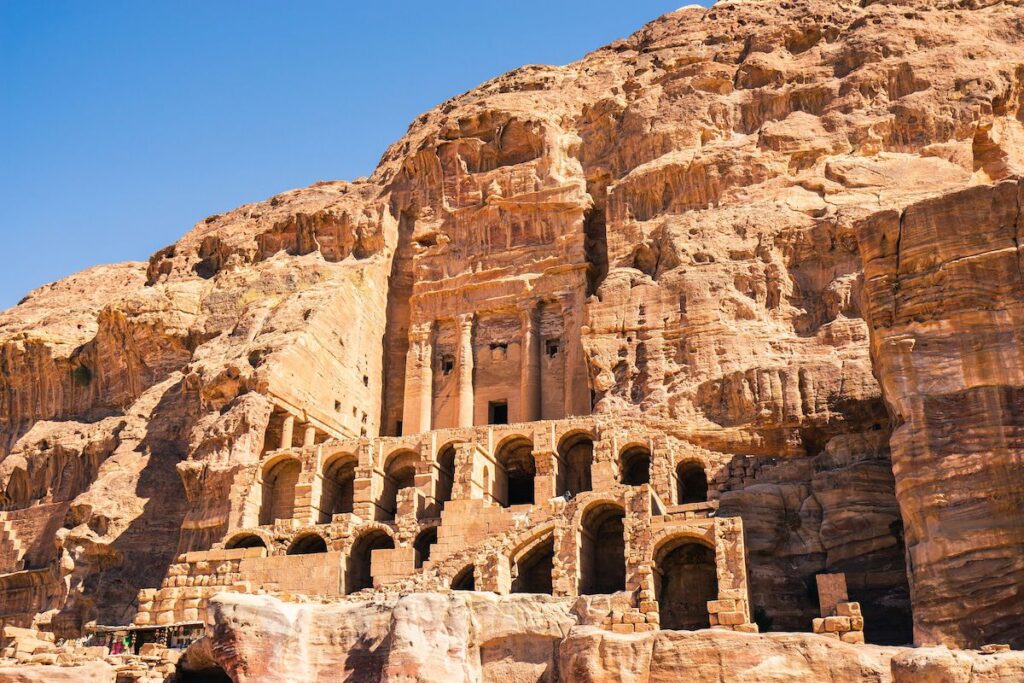
Photo: Stock Photos from upslim/Shutterstock

